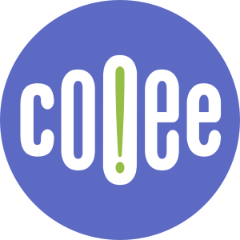There are many ways to drive traffic to your store: Search engines, email subscribers, social media, paid advertising, forums, sponsorship & blogging to name a few.
Which one you choose depends on what you think you can do consistently, and what works for your brand.
Search Engine Optimization
SEO is difficult, so unless you're prepared to invest considerable time and effort into the long game, I recommend focussing on something that will deliver results faster.
Having said that, you do need to ensure your store is being indexed by the search engines so it can be found via organic search. To achieve this, I recommend verifying your site with Google & Bing and submitting your store sitemap to both search engines.
You can do this yourself by visiting these sites and following the instructions.
Both methods require adding verification code to the theme.liquid page of your site.
I provide this as a service for $74 USD: Google & Bing site verification and sitemap submission
Also, try to make the most of your page title and meta description. You can do this yourself on this page: Online store > Preferences

This is the text that's displayed when your store appears on search engine results pages (Google, Bing, etc), and it helps attract traffic to your store.
To learn more about how to write this text, please download this free PDF guide.
Every page of your store has an SEO page title and meta description where you can optimize the text that appears in search engine results pages.

Watch this video to learn how to add SEO text for your Shopify store.
If you want to optimize SEO pages for your whole store in bulk, I recommend installing the SEO Manager app.
You should also set up a Google Analytics account and add the tracking code to your store so you can see where your traffic is coming from and what your conversion rate is.
I provide this as a service for $74 USD: Set up Google Analytics
Email marketing
Email marketing is probably the most effective way of engaging and converting traffic into sales. If you don't already have an email subscriber list, you should start building one immediately.
Make it easy for people to join your mailing list by using popups or prominent signup forms on your site. Give people a reason to join your mailing list, such as a discount, a free download, or free shipping on their first order.
Your mailing list represents your most engaged audience. These people have chosen to receive your emails, so if you can create engaging messages and great offers that drive them to your store, this will also be your highest converting audience.
To integrate email marketing into your store, I recommend the following services:
- Mailchimp allows you to create signup forms and popups, custom email campaigns and automated email flows. It's free for up to 500 subscribers and 1,000 emails per month.
- Klaviyo is the best-in-class email marketing platform for ecommerce, and integrates seamlessly with Shopify. It includes custom signup forms and popups, custom email campaigns, email autoresponders and flows, custom notification templates, advanced personalisation and segmentation of active profiles, and unique discount codes. It's free for up to 250 subscribers and 500 emails per month.
- Shopify Email is Shopify's own email marketing app. It doesn't have features such as email flows or signup forms built in, but is fully integrated with your Shopify store out of the box. Additional features can be added by integrating with Shopify Flow and Shopify Forms. It's free for up to 10,000 emails per month.
I provide these email marketing add-on services:
- Add Klaviyo email marketing for $199 USD
-
Add Mailchimp integration for $119 USD
- Add Shopify Email integration for $119 USD
Paid advertising
Google Ads and Facebook Ads can be effective ways of using paid advertising to reach your audience. Google ads are probably better for finding people with an intent to buy by using keywords that reflect this, such as "buy nike trainers online".
Facebook ads are very useful for finding "lookalike audiences" - audiences that are similar to people who are already interested in your products, such as the followers of your Facebook group or Instagram page, your mailing list, or your existing customers. You can create a "lookalike audience" from any of these groups, and then target this new audience with your Facebook ads.
Facebook ads are also good for retargeting people who have visited your store, so they receive ads that remind them of what they looked on your store sometime later. To use this feature you need to have the Facebook Pixel installed in your store. You can do this yourself on this page: Online store > Preferences
![]()
Social media
Many Shopify merchants have had great success using Facebook closed groups to build a community of followers. One of my clients makes most of her sales using Facebook live video. She sells directly to customers from her Facebook group for over an hour, twice a week and makes over $10K USD every time. The FOMO effect she creates in her live sales converts like crazy!
Instagram is also a great place to engage followers with regular, quality content and occasional product promotions.
As I said, there are many ways to drive traffic to your store. Most people try and fail several times before finding a technique or a niche that works for them, and then building on that.
